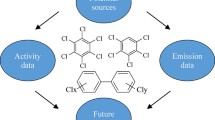Abstract
Polychlorinated biphenyls (PCBs), a type of persistent organic pollutants (POPs), are considered to be endocrine disrupters. According to the Stockholm Convention on POPs, PCB detoxification is being accelerated globally. We have developed an environmentally sound chemical PCB detoxification plant using the ultraviolet ray/catalyst method. The purpose of this paper is to check the design methodology for the PCB detoxification plant by the application of probabilistic safety analysis. First, possible hazardous events were determined; second, the weakest points in these hazardous events were established; and third, the impact when failures arise at the weak points in the system were studied. We clarified the preventive measures as follows. To prevent PCBs leaking into the environment, select leak-tight valves for the piping containing PCBs, and reduce the number of valves. To prevent fire or explosions due to leaks of an inflammable mixture, select leak-tight valves, reduce the number of valves installed in the piping, and improve the reliability of the suppression tank in the isopropyl alcohol (IPA) recovery unit.
Similar content being viewed by others
Author information
Authors and Affiliations
Additional information
Received: February 27, 2001 / Accepted: June 17, 2002
Rights and permissions
About this article
Cite this article
Watanabe, A., Ohara, A., Tajima, N. et al. PSA application for a PCB detoxification plant. J Mater Cycles Waste Manag 5, 0039–0048 (2003). https://doi.org/10.1007/s101630300007
Issue Date:
DOI: https://doi.org/10.1007/s101630300007




